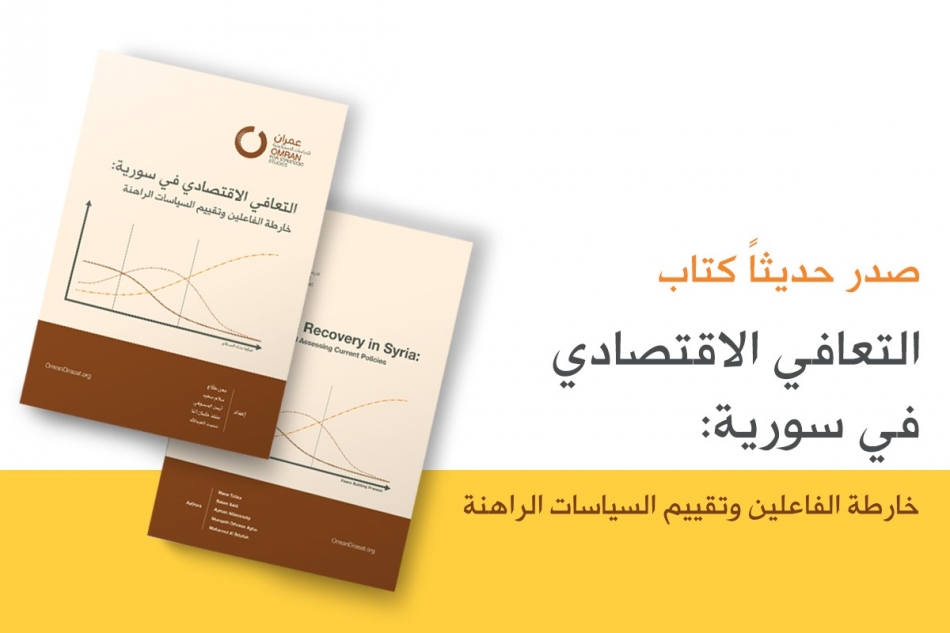Early recovery is critical because it is the phase that is supposed to transition the country from conflict to peace and stability and lay the foundation for the subsequent reconstruction process
October 23, 2019

Source: Omran For Strategic Studies
Introduction
The conflict in Syria that has been dragging on since 2011 generated many challenges that began to take shape as the conflict is coming to an end. Some of the key challenges pertain to early economic recovery which has already started in the various areas of the country, with their different influences, needs, resources and potentials. Given the current situation in Syria—with the consolidation of zones of influence and the faltering political process -local, regional, and international policies have begun to adapt to this reality, with key stakeholders launching early economic recovery projects in the established zones of influence.
The political and military landscape in Syria remains precarious and questions of the capacity of different actors, reality of these regions and the political context pertaining to economic recovery in these areas must be addressed in order for stakeholders to successfully implement early recovery projects. Accordingly, the Omran Center for Strategic Studies has developed a research series to understand the dynamics, political compass, requirements, and challenges of these early recovery projects so for them to facilitate the establishment of stability on the ground.
Early recovery is critical because it is the phase that is supposed to transition the country from conflict to peace and stability and lay the foundation for the subsequent reconstruction process. This phase has political and social dimensions that are of equal importance to its economic dimension. The political dimension involves working to stop violence throughout the country, establishing new governance institutions, and reaching a political solut3. Autonomous Administrationion that generates stability. The social dimension includes relief work, accommodations and housing for refugees, and national reconciliation after the preparation of an appropriate security environment. The economic dimension includes the restoration of basic public utilities, relaunching of the economy moving, rebalancing the macroeconomic framework, and dismantling the components of the conflict economy in areas both outside of and under state control. The above political, social, and economic elements are significantly intertwined and success in any one area depends on success in the other two.
The research orientation of Omran Center assumes that the coming phase in Syria will take place in a military post-conflict setting and that a most likely scenario to play out will be one of two: The first scenario is the instilment of the zones of influence: a ‘useful Syria’ with Iranian and Russian influence, eastern Syria with Western-Arab influence, and northern Syria with Turkish influence. The second scenario is continued investment in the ceasefire by regional and international actors, with priority placed on declared or undeclared negotiations to reach a new form of authority in which the existing regime maintains the largest share, thanks both to the efforts of its allies and the regime’s success in retaining the mechanisms of control.
The overall objectives of the research orientation of Omran Center are to identify criteria for an effective early economic recovery that is conducive to stability and development and to create a policy framework for implementing those recovery efforts. This research also aims to define the requirements and conditions for early recovery as they relate to security, governance, and development and to reach a position regarding the regime’s ability to handle Syria’s post-conflict challenges and to implement recovery and reconstruction policies. In this context, Omran has produced five reports:
1. A political analysis paper on the political context of early recovery in Syria;
2. An analytical paper of early economic recovery in Syria: challenges and priorities;
3. A paper on the political economy of early recovery in Syria;
4. A study on Early Recovery in Syria: An Assessment of the Regime’s Role and Capability; and 5. A study on the Turkish approach to early economic recovery in Syria, Euphrates Shield area as a case study.
For More Click Here
